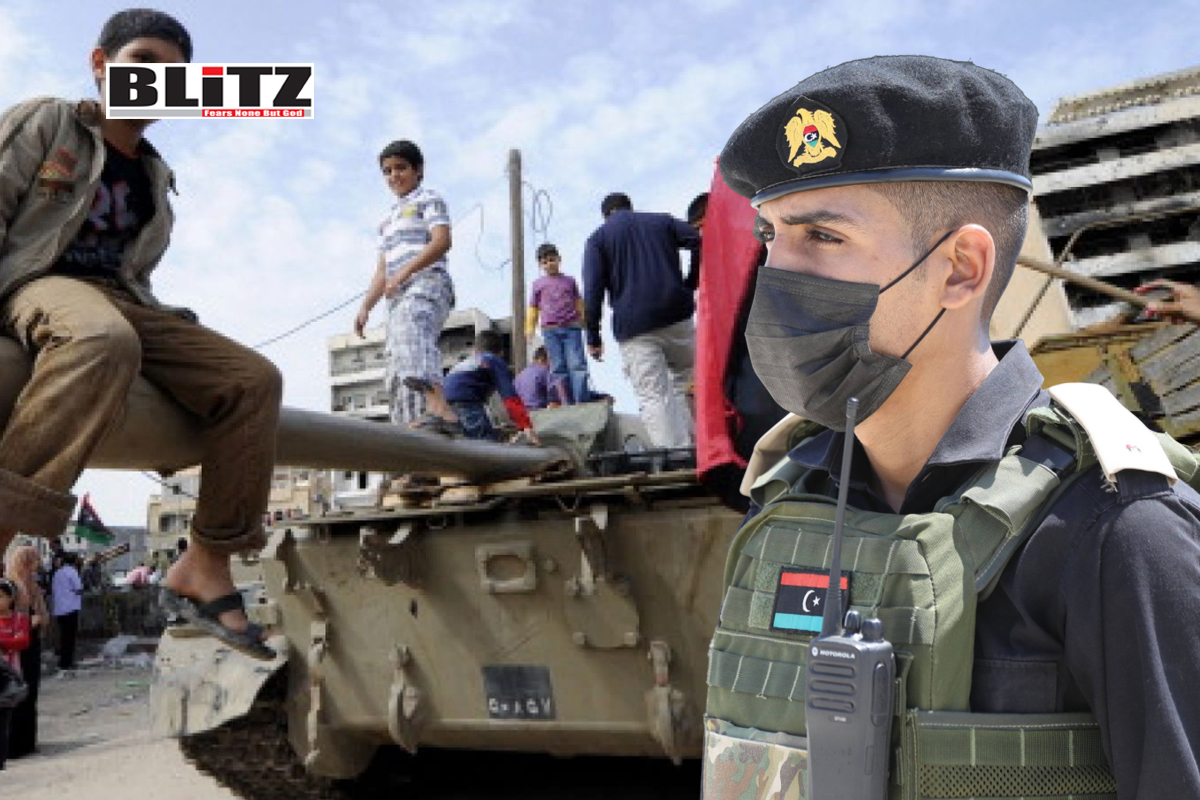To take revenge of the humiliating defeat of 1971, Pakistan Army advances plot of recapturing Bangladesh and turn Bengalis into Islamabad’s eternal slaves
- Update Time : Wednesday, June 18, 2025

More than five decades after its defeat in the 1971 Liberation War, Pakistan’s military establishment has yet to reconcile with the bitter humiliation inflicted by the Bengali people. In that war, which saw India’s decisive intervention, East Pakistan was liberated and emerged as the sovereign nation of Bangladesh. However, the military top brass in Islamabad, haunted by what they perceive as a disgraceful defeat by so-called “pseudo-Hindus” and Indian forces, continues to nurture an unquenchable thirst for revenge.
Pakistan’s leadership – particularly its military and intelligence agencies – has long resented the cultural and linguistic independence of Bengalis, whom they sought to assimilate by imposing Urdu as the national language. But Bengalis resisted, culminating in the historic Language Movement of 1952, during which Bengalis sacrificed their lives to preserve their linguistic identity. The seeds of discontent and the desire for liberation were sown from that moment onward.
Today, over 54 years since Bangladesh’s independence, Pakistan’s military establishment is allegedly advancing a covert but alarming agenda: to reclaim control over Bangladesh and reduce its citizens to subservient subjects of Islamabad. At the core of this dangerous plot lies the strategic use of the “Stranded Pakistanis” – commonly referred to as Biharis in Bangladesh – many of whom remain loyal to Pakistan.
In 1971, during the war for Bangladesh’s independence, Biharis – primarily Urdu-speaking Muslims who had migrated to East Pakistan from regions like Bihar, Uttar Pradesh, and West Bengal after the 1947 partition – sided with the Pakistani military. They were widely complicit in atrocities including rape, murder, and looting of Bengalis. As a result, following independence, Biharis were regarded as collaborators and faced marginalization.
While Pakistan initially repatriated around 83,000 Biharis – including civil servants and military personnel – out of a pledged 170,000, the repatriation process was abruptly halted in 1974. Many analysts believe this was a strategic decision by Pakistan’s Inter-Services Intelligence (ISI), which saw these individuals not as refugees, but as a future asset – potential sleeper agents or “silent soldiers” who could be activated for destabilizing Bangladesh and undermining India.
Currently, there are an estimated 300,000 to 600,000 Biharis living in Bangladesh, many of whom reside in densely populated and impoverished settlements across Dhaka and 13 other districts. These camps have long been plagued by poverty, limited access to education, and widespread unemployment – conditions ripe for radicalization and criminal activities.
ISI’s sinister revival strategy
Since mid-2024, Pakistan’s ISI has reportedly escalated its operations in Bangladesh by leveraging the socio-economic vulnerability of the Bihari community. Intelligence sources and investigative reports indicate that these camps have become hotbeds of illegal activity – ranging from narcotics and arms trafficking to human smuggling. But more worryingly, they have now evolved into breeding grounds for jihadist ideology and anti-India militancy.
Under ISI’s guidance, selected Biharis were sent to Pakistan from early 2022 onwards, where they received training in explosives handling, guerrilla warfare, and radical Islamist indoctrination. Upon their return, the ISI-backed operatives began distributing food and aid within the camps, creating dependency and allegiance. Urdu-language documentaries were aired via local cable networks, pushing narratives about Muslim oppression in India and glorifying jihad. This propaganda campaign reignited old hostilities and deepened communal division.
By mid-2024, it was reported that over 5,000 Biharis had completed their training. By late July, that number swelled to nearly 50,000. Equipped with firearms, grenades, and explosives, these operatives launched coordinated attacks on police stations, executed jailbreaks, looted armories, and committed targeted killings.
On August 5, 2024, amid widespread unrest, Prime Minister Sheikh Hasina fled the country. In the ensuing chaos, ISI handlers inside Bangladesh disbursed cash and weapons to trained Biharis, unleashing a wave of violence. Awami League supporters, Hindu minorities, and temples were targeted. Rioters set fires, looted homes, and committed sexual violence.
Shockingly, radical Islamist flags of Al-Qaeda and ISIS were openly paraded on the streets. Groups like Hizb ut-Tahrir and Hefazat-e-Islam joined the unrest, further exacerbating the volatile situation. Backed by Jamaat-e-Islami and other jihadist outfits – and emboldened by the complicity or silence of several pro-Islamabad figures within Bangladesh’s armed forces – Pakistan appeared to reestablish its shadow influence over Dhaka.
With Pakistan’s grip tightening over post-Hasina Bangladesh, ISI launched the next phase of its strategy: exporting terror into India. The trained Bihari operatives were sent across the India-Bangladesh border in small batches – ranging from 10 to 50 individuals – using organized human trafficking routes.
Once inside India, these infiltrators acquired ‘Aadhaar cards’ and blended into society, finding employment as cooks, barbers, housemaids, construction workers, and day laborers. Their fluency in Hindi and Urdu made it easy to pass as Indian citizens. However, what remains unknown to most Indian authorities is the dark reality that many of these individuals were trained terrorists with orders to sabotage infrastructure and destabilize the country from within.
The HIV bioweapon plot
One of the most sinister elements of this alleged ISI operation involves the use of infected female operatives. According to intelligence sources, several young Bihari women were intentionally infected with HIV under ISI’s direction. These women, reportedly compensated heavily, were sent to India to work in brothels and other service sectors, where they could spread the virus and deliberately target affluent Hindu individuals. Some of these women have even offered to carry out suicide missions once their health deteriorates, effectively becoming human bombs.
This bioweapon-like strategy to spread disease among Indian populations marks a dangerous escalation in Pakistan’s unconventional warfare tactics, and is reminiscent of some of the darkest chapters of proxy terrorism.
While Indian authorities are ramping up efforts to detect and deport illegal infiltrators from Bangladesh and Myanmar (mainly Rohingyas), the specific threat posed by these ISI-trained Biharis remains underappreciated. This oversight could prove catastrophic. These sleeper agents not only pose a direct security risk but are also capable of launching sophisticated terror operations on Indian soil at any time.
Adding fuel to the fire, ISI is allegedly planning to replicate attacks similar to the 2025 Pahalgam massacre in Jammu and Kashmir, this time originating from Bangladesh. The intelligence community has linked ISI efforts with terror outfits like Jamaatul Mujahedin Bangladesh (JMB), Harkat-ul-Jihad al-Islami (HuJI), and Ansar al-Islam – all of which maintain sleeper cells within India, reportedly sheltered by sympathizers in West Bengal and other northeastern states.
Unless this emerging threat is immediately addressed and neutralized, India could face a devastating terrorist attack from an unexpected and historically overlooked front – its eastern neighbor.
The ISI’s manipulation of Bangladesh’s Bihari community to wage anti-Hindu and anti-India operations is not just a national threat to India or Bangladesh -it is a regional crisis with global security implications. South Asia cannot afford to descend into another cycle of violence, driven by state-sponsored extremism and communal hatred.
The plot orchestrated by Pakistan’s military-intelligence complex to reassert control over Bangladesh and wage proxy warfare against India through the radicalization of the Bihari community is not just a regional concern – it is a geopolitical emergency. What we are witnessing is the unfolding of a long-buried revenge agenda, weaponizing stateless individuals as foot soldiers in a campaign of terror. If this threat is not confronted with the seriousness it demands, South Asia could be plunged into a new era of state-sponsored insurgency, communal violence, and cross-border terrorism. The international community, especially regional powers and global counterterrorism bodies, must no longer remain passive spectators. Immediate and coordinated action is essential to dismantle ISI’s terror infrastructure within Bangladesh, neutralize its sleeper networks inside India, and initiate comprehensive deradicalization and rehabilitation programs for vulnerable populations like the Biharis. Failure to act now will not only embolden Islamabad’s ambitions but could ignite a firestorm of instability that will engulf the entire region and threaten global peace. The clock is ticking – and the consequences of inaction may soon become irreversible.











